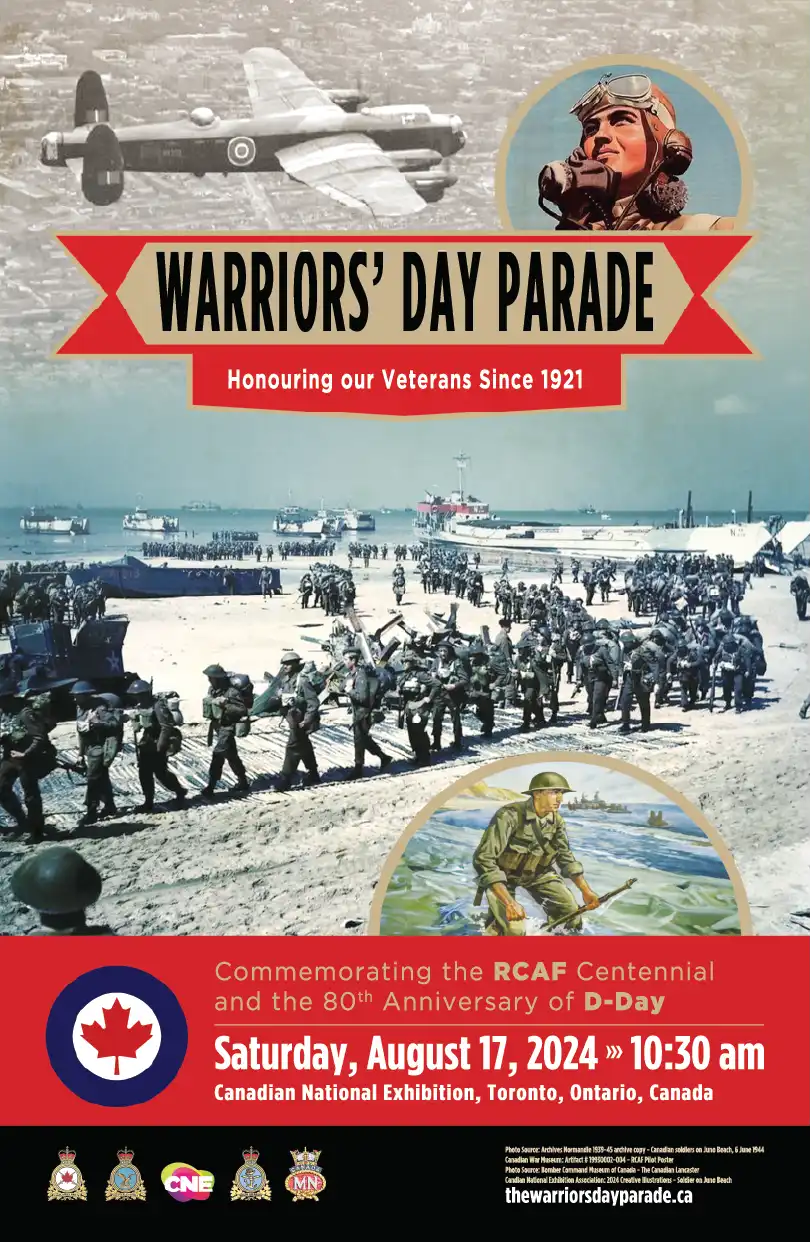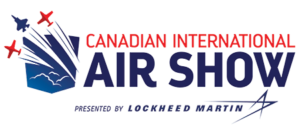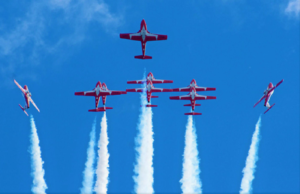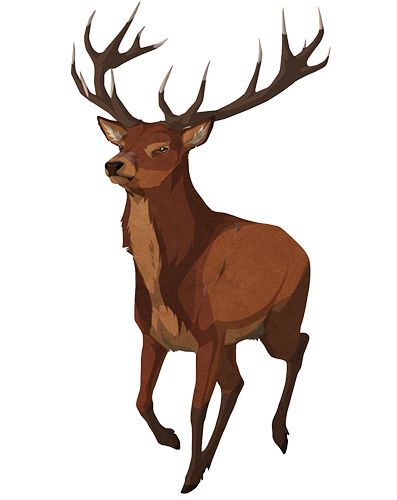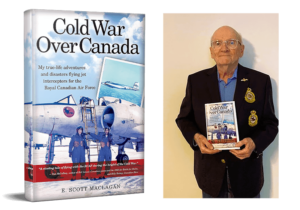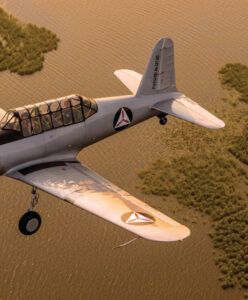Pathway to the Stars is the first of several books that will celebrate the RCAF’s 2024 Centennial is now available from CANAV. Pathway to the Stars is a 264-page, large-format, hard-cover rich in text and photos produced by the RCAF Foundation. If your interest is RCAF history, you’ll definitely want this major production, especially if you already have the 1984 Sixty Years and Canada’s Air Force at War and Peace series. Order from CANAV Books at [email protected]. Get in on the ground floor! USA and overseas orders CAD $72.00 all-in, surface mail.
Meanwhile, here at CANAV we’re still beavering away at our own RCAF Centennial book which is due off the press for the RCAF Centennial in April 2024. If you have our Sixty Years from 40 years ago (and about 20,000 do), you’ll know what to expect with this spectacular production. What you’ll get is the very best – no other book will come close with the wide sweep of topics and depth of treatment. CANAV’s will be authoritative and beautifully produced – our two chief hallmarks. That said, real fans will want all the forthcoming RCAF 1924 – 2024 titles on your bookshelf. Each will shed new light on this huge story, which no single book can cover 100%.
CANAV Fall/Winter 2022-23
Following such CANAV Books best sellers as Sixty Years, De Havilland in Canada and Air Transport in Canada, here’s important news for all libraries and aviation history readers. CANAV’s “Aviation in Canada” series is the ultimate history of our remarkable flying heritage. Since its beginning in 2008, this encyclopaedic project totals 8 beautifully-produced, large format hardcovers. The page count already exceeds 2100 with more some 5000 photos. These are books to cherish for any public library, school or reader keen about Canada’s incomparable aviation heritage, or any student doing research. They also will inspire any young Canadian exploring career possibilities in the burgeoning airline and aerospace industries.
deHavilland
Chipmunk
Otter
Beaver
Beaver #1000 which rolled off the line at Downsview in late 1956. Still flying today as a seaplane in B.C. carrying passengers every day – A tough bird!
Caribou
Buffalo
Twin Otter
The Vampire
The development of radar in the 1930s led the RAF to revise its defences against bombers. Traditional reliance on standing patrols along the coast had emphasized endurance. Radar, however, facilitated fighter scrambles emphasizing speed and rate of climb. Performance soared to new heights in Britain with development of the jet engine under Fl-Lt. Frank Whittle. In 1935 Whittle found sponsors who helped to facilitate Power Jets, the company formed to develop Whittle’s engines with air ministry research money. It produced the W.1, which made its first successful run in June, 1939. However, the engine produced only 1,000 pounds when 3,000 was needed. Almost immediately a spec was issued to produce the second version, the W.2, with 3,000 lbs thrust. Gloster was to produce the aircraft, while Rover built the engine. [ More info … ]
The Comet
The aircraft, named the Comet after the D.H.88 Comet racer of the 1930s, was first flown officially by chief pilot John Cunningham on July 27, 1949. Just two weeks later, another promising groundbreaker, the Avro Canada C.102 Jetliner, made its first flight from Malton on August 10. Development of the Comet included long-distance and endurance flights, and tropical trials. Cabin pressurization at 40,000 feet was tested. A global trendsetter in speed, the Comet broke new ground but it also faced unprecedented engineering challenges. As newsreels recorded with great excitement, “the eyes of many nations were focused upon it.” Orders from airlines around the world were eagerly anticipated. One such airline was Canadian Pacific Airlines. [ More info … ]
De Havilland in Canada - Fred W. Hotson
The story moves to the Second World War with the Tiger Moth, Anson and Mosquito – the magnificent “Wooden Wonder” and the fastest bomber of it’s time. Next come the postwar blues, with workers laid off; but the parent company backed DHC’s concept for a Tiger Moth replacement, the Chipmunk. From this venture a skilled DHC design team emerged. Manager Phil Garratt followed with his dream of a small bush plane, the amazing Beaver. Details follow of subsequent projects – the Otter, Caribou, Buffalo, Twin Otter, Dash 7 and Dash 8. [ More info … ]
Remembering Russ Bannock
As recounted in The Chosen Ones by Sean Rossiter, the elevator hinge was a recurring problem. Russ almost had to bail out of a production Beaver because the elevator jammed on him while he was doing stalls. As he recalled, “The elevator was jammed. I shook and shook and shook. Fortunately, I was up at around 4,000 or 5,000 feet. Eventually I found that by getting both feet on the control column I could push it enough that, with a little bit of power, I felt I could control it.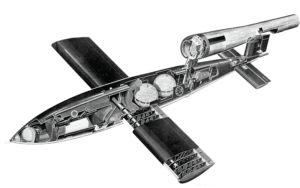
“Fortunately, I was still at about 3,000 feet when suddenly it let go. It had a box full of sandbags at the back and a lot of these sandbags came up and hit me, because suddenly it pitched forward. Well, then it jammed the other way. With it jammed the other way, I, with a little bit of power, could steer it in onto the long runway and land it.” The problem was traced to a piece of piano wire that held the elevator tab. Unfortunately, de Havilland engineers didn’t pinion it at each end. [ More info … ]
deHavilland Canada’s STOL Aircraft
A paper by George Georgas
STOL has had a flexible definition over the years. The DHC-2 Beaver was conceived as a rugged, easily maintained bush plane that could land and take-off in confined areas, particularly lakes, both in summer and winter (Fig. 1). As with all of the subsequent DHC aircraft types, it was designed to meet and operate under one or another set of established national civil air worthiness regulations. When the prototype DHC-2 Beaver, CF-FHB-X first flew, on the 16th of August 1947, the term STOL hadn’t yet been invented! In the case of the Beaver, the regulations were the British Civil Airworthiness Regulations, Section K, Normal Category. Initially, its gross weight was 4,500 lbs. but this was eventually increased by 13 percent to 5,100 lbs. [ More info … ]
Robert Howden Fowler
On August 26, 1944, Bob had a harrowing experience. His aircraft was hit by flak over Caen. Eighty holes were later found in the bomber. The left engine was hit and the prop became ungovernable, so he reduced power. Fuel was leaking into the navigator’s compartment. The landing gear was unlocked and drooped down. Bob, losing altitude, offered the crew the option to bail out. They refused. Bob followed two other crippled Mitchells into an airfield on the U.S. side. The first aircraft landed safely, but the second flew past the end of the runway and burst into flames. Bob was landing towards a burning airplane, without flaps and hydraulics. The navigator hand-pumped the gear down, but the left tire was shot out. It was a very rough landing, ending in a ground loop. Luckily, the crew quickly evacuated safely, with fuel still coming out of the wing. Bob wrote in the Journal that it was sometimes a relief to not fly in formation, often in high concentration. Crews often flew very close to the ground. After the war, he realized he had flown over numerous hazards that he wasn’t aware of. [ More info … ]
The Buffalo
In the summer of 1982 he was contacted about the hijacking in Honduras of a Dash 7. The passengers included 16 American employees of the United Fruit Company. American special forces didn’t know anything about the Dash 7. DHC, however, assisted by sending a repossessed Spantax Dash 7 that was sitting on the ramp at Downsview to Honduras with Transport Canada’s permission. Tom was part of a four-member crew. Leaving Tampa, FL, in the afternoon, they faced a challenging flight over the Caribbean at night with most of the airports and radios shut down. It was a “long and quiet” flight through thunderstorms until they arrived at Tegucigalpa, where they landed with minimum lights. The crew were taken to a hotel, where the special forces were instructed how to open the Dash 7. Within half an hour, the hijackers were arrested. Only two passengers had minor injuries. [ More info … ]
Canada's Airlines
Air Canada – The History – Peter Pigott
Begun as a social experiment in 1937, Air Canada has evolved into one of the world’s greatest airlines.
Air Canada: The History explores a modern miracle that has made commercial air travel in our country an everyday occurrence. The airline was born in 1937 as “Trans Canada Airlines,” a ward of the Canadian National Railway. Renamed “Air Canada” in 1964 to reflect its status as a jet-age airline, it survived devastating air crashes, financial deficits, self-serving politicians, strikes, privatization, and the Airbus scandal.
It was reviled in the nineties by the likes of Peter Newman, who joked, “If God had meant Man to fly, he wouldn’t have invented Air Canada.” Today it is a much loved national icon. Fortunate at times to be run by great CEOs like Gordon McGregor and Claude Taylor, Air Canada has fought off a hostile takeover, merged with its arch-rival Canadian Airlines, and touched countless lives during its 75-year history.
This is its story. [ More info … ]
Wing Walkers – The Rise and Fall of Canada’s Other Airline – Peter Pigott
With unique insight and straightforward prose, Wingwalkers tells the saga of Canada’s other airline, a scrappy western mongrel that, through eight decades and numerous name changes–Canadian Airways, Queen Charlotte Airlines, CP Air, PWA, Wardair and Canadian Airlines International–transformed itself from a bush flying and mining operation into an international carrier. This revised edition brings the airline’s story up to date with a new final chapter chronicling the corporate dogfight in Canada’s skies that led to CAI’s takeover by Air Canada.
Wingwalkers begins in the early 1920s when millions of dollars were made by the brave and resourceful people who took advantage of exciting new technologies in transportation and communication.
Postwar Piston-Engined Airliners
The Boeing B377 Stratocruiser
The Boeing Stratocruiser began life as Boeing’s postwar airliner project designed to compete with Douglas with their DC-6B and Lockheed with their lovely Constellation. The bulbous (Jumbo-Like) double-decker fuselage of the Stratocruiser was derived from the C-97 Stratofreighter, while the wings and engines were taken from the B-29D Bomber model. Engine type was the 28 Cylinder Pratt and Whitney R-4360-5 Wasp Major Radials of 3500 Hp. These complex engines would be a continuing source of problems for the Stratocruiser. The Stratocruiser was designed as a “Virtual Electric Airliner”, since the available hydraulic fluid in the 1940s was highly flammable, therefore Boeing decided to “Go Electric” for all accessories, controls and landing gear. A contemporary airliner was the French double-decker, Breguet, which flew in early 1953. 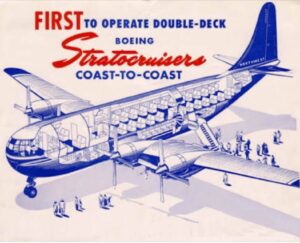 The Stratocruiser was first ordered by Pan Am, closely followed by orders from BOAC of the UK. Stratocruisers appeared in the James Bond movie, “Diamonds Are Forever”. A favourite route on BOAC Stratocruisers from 1949 forward, was the Trans-Atlantic run from Montreal to London, with some flights departing from Toronto-Malton. In spite of flight planning based on favourable flight / upper wind conditions over the Atlantic, frequent refueling stops had to be made using Gander, Newfoundland and Labrador. Notwithstanding the sometimes lack of non-stop service, a great number of Canadians preferred the Stratocruiser service for its wide cabin featuring, side-by-side seating comfort, overnight berth availability, a lower deck lounge / bar reached by a spiral staircase, and most important, a far lower noise level than the competing TCA Merlin – Powered Canadair North Stars. Canadian Stratocruiser service continued into the 1950s until the introduction of Boeing B707 Jetliners. In later years some of the Boeing Stratofreighters (C-97) and Stratotankers (KC-97) were converted into the specialized “Guppy” Series” for carrying large, oversized, bulky cargo.
The Stratocruiser was first ordered by Pan Am, closely followed by orders from BOAC of the UK. Stratocruisers appeared in the James Bond movie, “Diamonds Are Forever”. A favourite route on BOAC Stratocruisers from 1949 forward, was the Trans-Atlantic run from Montreal to London, with some flights departing from Toronto-Malton. In spite of flight planning based on favourable flight / upper wind conditions over the Atlantic, frequent refueling stops had to be made using Gander, Newfoundland and Labrador. Notwithstanding the sometimes lack of non-stop service, a great number of Canadians preferred the Stratocruiser service for its wide cabin featuring, side-by-side seating comfort, overnight berth availability, a lower deck lounge / bar reached by a spiral staircase, and most important, a far lower noise level than the competing TCA Merlin – Powered Canadair North Stars. Canadian Stratocruiser service continued into the 1950s until the introduction of Boeing B707 Jetliners. In later years some of the Boeing Stratofreighters (C-97) and Stratotankers (KC-97) were converted into the specialized “Guppy” Series” for carrying large, oversized, bulky cargo.
The Canadair North Star
A very detailed history of what was once an important workhorse of Canadian aviation. Includes maps, appendices, bibliography, index. Folded mechanical drawing of the aircraft in rear pocket.
The world is down to a single North Star. Get the low-down on this famous propliner in a book that is the model for any aircraft history. Grand daddy of the CSeries … Canada’s first airliner from conception through a stellar career.
The sole surviving airframe in existence is an RCAF C-54GM example (17515 ), which is currently undergoing restoration at the Canada Aviation and Space Museum in Ottawa, Canada.
Airliners & Models
Featuring an open-to-the-public Boeing 737-800 simulator, as well as pilot and aviation enthusiast products.
Flying the Heavies
There was always the potential for trouble, as when Howard was bringing in a DC-8 from Winnipeg to Toronto. One of its engines had been damaged while a new pilot was being checked out. Howard became suspicious when he could not find any logbook proof that the No. 1 engine had been ground-run. He asked his first officer to keep a close eye on the engine. On takeoff, the oil pressure began to waver and reduce. Howard soon decided to shut down No. 1 and they returned to Toronto at Mach .8 on three engines. Transport Canada was notified of the reduced engine capability. They brought out the full emergency landing crew to the surprise of the crew and a big audience was on hand.
The Gimli Glider
The situation changed rapidly when they passed Red Lake at around 41,000 feet and a low pressure fuel warning light came on. Quintal consulted the Quick Reference Handbook. The crew assumed there was a problem with a failed fuel pump in the left wing tank. They felt it wasn’t a problem, as each engine had other pumps, and felt the trouble was a computer hiccup. Capt. Pearson noted the first thing pilots are trained to do before they ever go solo is to believe their instruments. “We had made all of these fuel checks and it all made sense,” he recalled. They shut off the defective pump. Then another warning alerted the crew that the second pump in the left wing tank was failing. One by one, other low pressure lights came on as the fuel pumps failed. The problems seemed more than coincidence. [ More info … ]
Airports
Sport and Recreational Flying
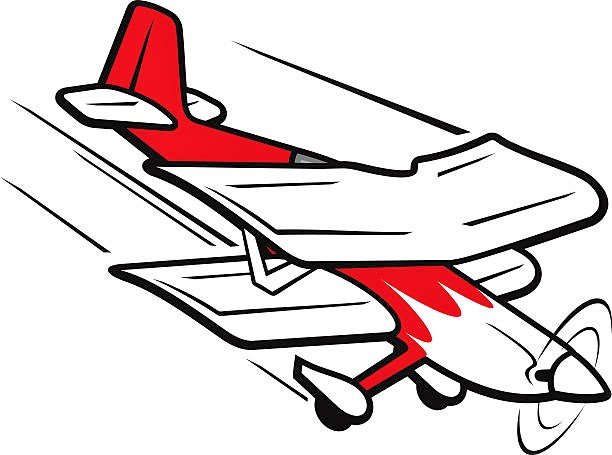
While relatively few people are interested in flying competition aerobatics, Hella encourages general aviation pilots to take an aerobatic course. It’s really worthwhile to improve skills with training to recover from unusual flight attitudes. Second World War pilots, for example, had to complete a four-turn spin coming out on an actual heading, complete a loop, a roll and a Half Cuban Eight in order to solo. “We have nothing like that anymore, which I think is a real loss,” Hella said. Every time she flies, she does one, two or three spins of various kinds. She works at the very slow end of the flight envelope. In fact, she could be flying a vertical manoeuvre where the airspeed is well below the stall speed and she is just hanging on with full power to keep the aircraft flying. “I’d like to think I can get some confidence from feeling what it is like when the airplane is at the edge of control,” she said. We hear about accidents where pilots on base-to-final overfly the turn because of wind or whatever. They try to get lined up again. But flying very slowly, they increase their angle of bank, the top wing stalls and they are into a spin situation at low level. Hella suggested the number of such accidents could be reduced with training at unusual attitudes. [ More info … ]
Light Sport Aircraft
In 1931, the Taylor company went bankrupt and William Piper bought all of the assets at Bradford. Piper took full control of the company in 1934. Taylor left with his share of the money and moved to Ohio, where he formed the Taylorcraft Aviation Company, which became a successful operation. Several hundred E-2 Cubs were built between 1930 and 1936. Most were sold with the 37 hp engine. However, the aircraft was still more expensive than its builders liked. Vibration and reliability issues arose with the engine. The E-2 evolved into the improved J-2 with an enclosed cockpit, new engine, and different tail. In 1937, the Bradford plant burned down. Piper moved the entire operation, including 200 employees and what was left of the manufacturing equipment, to Lock Haven, Penn. He found a bargain in an abandoned old silk mill. Piper, an astute businessman often called the “Henry Ford of Aviation,” built no fewer than 687 airplanes in his first year, and the workforce doubled. In 1938, Piper hit a jackpot with engines as three manufacturers — Continental, Lycoming and Franklin — all introduced modern, reliable powerplants. [ More info … ]
Technology & Manufacturing
The X-Planes
How did we gain an aviation industry in Western New York and part of Canada? It was due to Glenn Curtiss of Hammondsport, NY where he was running a bicycle shop and developing engines for motorcycles. In 1907 Curtiss set a world speed record of 136 mph on Ormond Beach, Florida, while riding the world’s first V-8 powered motorcycle that he built in his shop. For this feat, Curtiss become known, ”as the fastest man on earth”. People tried to get Curtiss interested in building engines for the emerging new field of aviation. Curtiss was at first reluctant, but when the airplane became more prominent, he quickly formed the Curtiss Aeroplane Company. Curtiss caught the attention of Alexander Graham Bell, the famous inventor, who had just formed the Aerial Experiment Association which was financed by Bell’s wife Mabel. [ More info … ]
The X-15
Running from 1958 to 1968, the X-15 project was considered to be the second phase of American high-speed flight research intended to take aviation speeds from Mach 3 to Mach 6, and from altitudes of 125,000 feet to the edge of space and possibly beyond. The earlier X-plane presentation, on planes designed and built by Bell Aircraft in Niagara Falls, NY, covered the pioneering aircraft that took aerospace from high subsonic speeds to approximately Mach 3 from 1946 to 1956. During that period, two programs were involved: the better-known one was run by the USAF in association with the NACA (National Advisory Committee for Aeronautics), later NASA (National Aeronautics and Space Administration). It utilized the Bell X-1, then the Bell X-2, to investigate high-speed and high-altitude flight. A parallel program, by the US Navy, used the Douglas D-558-1 Skystreak and the D-558-2 Skyrocket. In 1954, various NACA research centres studied designs for the next generation of high-speed research. A proposal from the Langley centre entailed [ More info … ]
Presidential and Research Aircraft
Franklin D. Roosevelt was the first U.S. president to fly in office. FDR travelled to the Casablanca Conference in January 1943 on a Pan American Airways Boeing 314 Clipper. Because of security concerns about the president flying on a commercial airliner, the Army Air Force Air Transport Command was given the responsibility of flying the president. The Douglas VC-54C became the first presidential aircraft. It flew FDR only once, to the Yalta Conference in February 1945. The press nicknamed the aircraft as the Sacred Cow as a result of the stringent security and special status of the aircraft, officially known as The Flying White House. The VC-54C was a unique combination of a Douglas C-54A fuselage and C-54B wings for greater fuel capacity, with the V designation indicating it was a VIP transport. [ More info … ]
The AVRO Arrow!
The 22nd flight of Arrow 25202, was on on Nov. 11, 1958. Spud Potocki was the pilot. The pilot’s readout, recorded by ground control, indicated the Arrow reached Mach 1.90 (1,254 mph) in level flight at 50,380 feet and Mach 1.95 in diving flight with rate of descent of 6,000 feet per minute. Mach 1.90 could probably have been exceeded in level flight, but due to low acceleration the test was terminated in favour of a high Mach number dive. Mach 1.95 was achieved at 47,300 feet in the dive and this Mach number persisted to at least 45,000 feet. It was found the port engine delivered slightly less power than the starboard engine. Had both engines delivered the same power, it was estimated a maximum of Mach 1.94 rather than 1.90 could have been achieved in level flight. [ More info … ]
During two summers on the lake, the team covered about 60 square kilometres of grid. It was like searching for a needle in a liquid haystack, in depths of anywhere from 60 to 90 metres, but the effort was rewarded with the discovery of the DTV. The DTV was so heavily covered in zebra mussels that the recovery team didn’t know what they had until it was brought out of the lake last summer. The video showed how the DTV was very carefully brought to the surface with the assistance of a commercial dive team. The DTVs were intended to help operators learn better targeting efficiency as they followed the model flights and tried to determine what the wing of the Arrow would do when pushed to a rate of Mach 1.5 or 2. Three DTVs were fired before the one-eighth scale models were launched. While the DTV showed significant damage from entering the lake at high speed, it was in remarkably good shape after more than 60 years. [ More info … ]
F-35 Fighter Jet
Design of stealth fighters is challenging in several ways. They tend to be large in size, partly as a result of space required to store weapons internally. That means a larger airframe and invariably, bigger engines. The stealth advantage can be lost when the armament bay doors are opened. Another worry is that the Russians are way ahead of the West in infrared sensing technology. Stealth fighters require a large amount of maintenance and are very expensive. High costs led to the retirement of the Lockheed F-117 Nighthawk in 2007 and to massive cuts in the F-22 Raptor program. Growing problems with the weight and cost of the F-22 were evident after its inception in 1991 when, as the YF-22, it won the Advanced Tactical Fighter stealth competition over the Northrop YF-23. Production ended in 2011 after 195 F-22s were built. [ More info … ]
McDonnell Douglas in Canada
Up to 40,000 parts would be required for a set of aircraft wings, and many were described as “agonizingly complex in design.” The fabrication of such parts to exact tolerances, on time, and at the lowest possible cost, was critical to continuing success —especially given what the video described as the “fierce” competition in the aircraft industry. During the decade between 1980 and 1990, MD Canada invested more than $100 million to modernize the plant and equipment and its operations had a major impact on the Canadian economy. Each aircraft produced benefited almost 1,000 external businesses —vendors, suppliers, and sub-contractors —which provided specialized materials and services for MD. Whether it was an MD-11 or an MD-80 series aircraft, an average of more than $1 million was paid to vendors and suppliers. Each MD-80 generated about 200,000 total job hours in Canada, more than$1 million in tax revenue for the federal government, and an additional $5 million for Canada’s Gross National Product. Each MD-11, meanwhile, generated 100,000 man-hours. When multiplied throughout the economy, each produced more than 330,000 job hours in Canada. [ More info … ]
Cold War Fighters
Making the cover of Time magazine, Howe convinced Washington to allow Canadair to build the Sabre under licence in Montreal, initially with the General Electric J-47 engine and then the more powerful Avro Orenda. The Americans were reluctant to allow their military hardware to be sold offshore, but Howe managed to broker a deal for the Sabre. During the same period, Canada forged ahead with the CF-100, with the first two aircraft powered by the British Rolls-Royce Avon before the Orenda became available. Tensions escalated with the outbreak of the Korean War in June, 1950 and military spending rose. As much as 50 per cent of defence spending in the 1950s went to the air force, as opposed to the army and navy, to manage the threat of Soviet intercontinental bombers. [ More info … ]
Training the Postwar Luftwaffe on Sabres
The Sabre 6 was “an absolutely magnificent airplane. It was effective. It was fast.” Everyone knew the unique call sign, “Tomahawk 28,” used in the event of engine failure. The pressures of the Cold War era meant that pilots had to be constantly on high alert. Paul noted that rather than being lined up on the tarmac, the fighters at Baden-Soellingen were dispersed in the trees for protection against potential enemy attack. Paul liked the Germans and found them to be very welcoming. “One of the things that really impressed me right off the bat was that everybody spoke English,” he recalled. A German pilot told Paul they made a fundamental decision after the war to become “citizens of the world economy” and to do that they learned how to speak English starting in primary school. [ More info … ]
Aircraft Industry in Canada
Our current industry was shaped by the fact that both de Havilland and Montreal-based Canadair Ltd. were foreign controlled in the 1970s. Neither Hawker Siddeley, owner of DHC, nor General Dynamics, owner of Canadair, invested in new aircraft. Canadair became the core of Bombardier when it was sold in 1986. Canada’s industry would evolve to get a new lease on life with next-generation aircraft, reflected in a stream of business aircraft and regional aircraft. De Havilland began to focus on the inter-city and shorthaul commuter market with the Dash 7 and Dash 8 series of turboprops. The Dash 8 prototype first flew in May 1983. As Canadair’s fighter jet production lapsed, the company concentrated on the Challenger as a long-range, high speed business jet. The regional market that Canadian companies entered was highly competitive. The presence of government-funded rivals such as Fokker, SAAB and ATR created pressure to offer prices at rock-bottom prices to attract sales. [ Read the whole story … ]
Sam Longo – Aircraft Mechanic
The life of an aircraft mechanic can sometimes put you in close proximity to the rich and famous, which Longo discussed in his column ‘Close to Famous.’ The 747 hangar at Pearson Airport was known as the VIP terminal. When the red carpet was rolled out, he knew that something was up. There were varying degrees of fanfare, depending on the dignitary. A visit by a member of the Royal family was generally a subdued event. However, Longo described the arrival of President Ronald Regan as surreal. A C5 Galaxy armed with secret service agents and two bulletproof limousines arrived followed up by every nook and cranny of the hangar being scoured in advance of Air Force One’s arrival. “You would swear World War III was about to start.” [ More info … ] — Get Sam’s book here
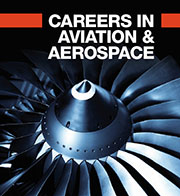
Building tomorrow’s workforce today
The Canadian Council for Aviation and Aerospace (CCAA) is the only national association in the country dedicated to attracting and developing workers with the skills the Canadian aviation and aerospace industry needs to meet the demands of the current and future workplace.
The CCAA has developed and implemented a national labour market and outreach strategy to help ensure that an innovation-driven, flexible and skilled workforce is available to support the aviation and aerospace industries in Canada.
Aero Tributes
Lou Wise: Canada’s “Pilotographer”
“Pilotographer” describes Lou Wise as he always had a remarkable ability to combine his two passions, aviation and photography, and became a well-known advocate for protection of the environment. He began with a short Global Television profile in 2012 showing Lou, at age 91, flying his beloved Piper Cherokee, C-FXCO. Lou acquired it in 1978. In commenting on his longevity, he said: “If you have things you love to do and keep on doing them, it keeps you going. That’s my philosophy anyway.”
The profile highlighted Lou’s award-winning environmental aerial photography in a “retirement career,” flying for Conservation Authorities all across Ontario over three decades. He took beautiful photos of rivers, wetlands and landscapes while flying the Cherokee with his left hand and taking pictures with his right hand. Lou installed a larger, customized door to facilitate the picture-taking from his “lofty perspective.” [ More info … ]
Aero Tribute – Robert W. (Bob) Bradford / T.L. White / Lou Wise
Introduced in January 1996, the Ad Astra Stone Program celebrates the service and sacrifice of the over 12,000 air force personnel whose legacy is preserved in the RCAF Memorial Airpark at the National Air Force Museum of Canada. The program, originally conceived by Maj (Ret.) Roy Skillicorn and developed by Col (Ret.) Cy Yarnell, offers personnel who have served in any of Canada’s air forces the opportunity to memorialize their contribution by way of an engraved stone marker that line the pathways of the Airpark.
Each year, a dedication ceremony is held to commemorate the service of the air force personnel whose legacy is held at the NAFMC, and thank all those who have contributed to the program in support of the Museum. [ More info … ]
Women in Aviation
Vi Milstead
As a young teenager Vi wanted to be a surgeon, but when her mother opened a wool shop, Vi was taken out of school, thus ending that dream. In the meantime Vi set her sights on aviation. Vi helped out in her mother’s shop, saving all of her earnings to pay for flying lessons. When she began flying lessons, her instructor had a film made, Let’s Learn to Fly, starring Vi. No doubt he chose Vi to demonstrate that “even girls can learn to fly”. Soon after she completed her Private Pilot Licence, her mother sold the wool shop and Vi lost her income source. So she started her own business to earn money to pay for her commercial lessons. Within the next ten years, besides owning a business in North Toronto, Vi taught others to fly at Barker Field. When civilian flying ceased during WWII, Vi joined the Air Transport Auxiliary in England,delivering airplanes from factories to the military bases. With the ATA Vi logged over 600 hours on 47 different types of aircraft, 74 if we count different marks. As a First Officer, she was qualified on all but the four engine planes. After the war, Vi instructed again at Barker Field. O [ More info … ]
ATA Operations in WWII
The Northern Lights Aero Foundation
The Northern Lights Aero Foundation recognizes and celebrates accomplished women in aviation and aerospace. Our mission is to attract and inspire women to succeed in careers in aviation and aerospace. We will encourage those ambitions by engaging in outreach, facilitating mentorships, providing scholarship opportunities, and championing the values of diversity and inclusion. [ More info … ]
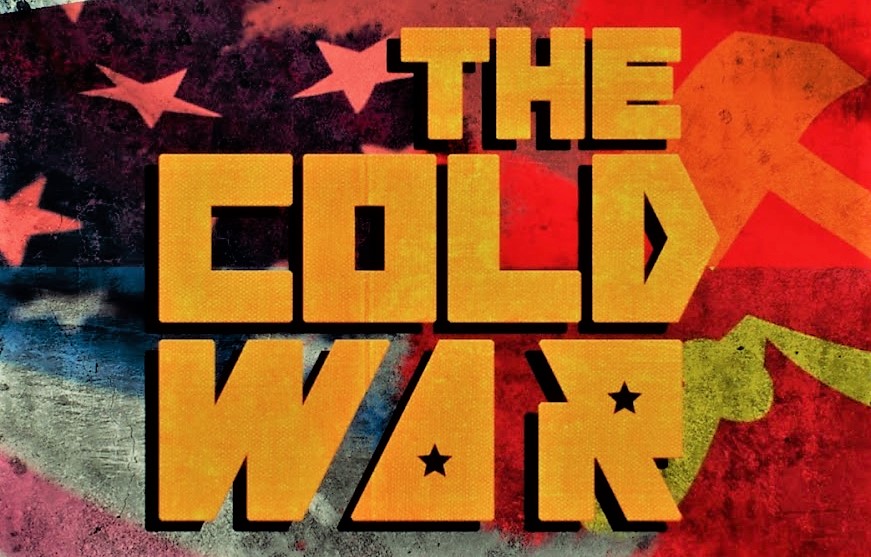
Cold War Over Canada
A story of the Cold War in Canada remembered by RCAF jet interceptor flier Scott Maclagan.
In the 1950s, thanks to geography Canada played a major role in the Cold War. Long-range US bombers armed with nuclear bombs regularly flew north over Canada, ready to continue on-wards to Moscow and other Soviet targets. Meanwhile Soviet bombers regularly headed towards North America.
Scott Maclagan spent the Cold War in CF-100 jet interceptors, flying over Canada. The mission was to be ready for a Soviet attack – and to monitor all unknown aircraft spotted on radar.
In this book, the only published account of the experiences of a Cold War flier over Canada, Scott recounts his recruitment by the air force, the early training which graduated only two of a hundred young men, and his many adventures flying as a navigator in the two-man Canadian-built jet CF-100. He and his pilot partner were in line to fly the famed Avro Arrow which was to replace the CF-100. Ironically, as Scott tells in this memoir, he was able to denounce the decision to cancel the Arrow shortly after when he came face to face with Prime Minister John Diefenbaker. [ More info … ]
~ Scott Maclagan is a gifted story-teller, with perceptive, revealing and often entertaining accounts of his experiences in the air force. Photos from his collection and from his buddies complement this readable and enjoyable memoir.
~Scott has written a book that outlines his career as a Navigator / Weapons Officer in the Royal Canadian Air Force. Reading his book is like having a conversation with Scott.
He takes you from his enlistment right through to his transition back to civilian life. This book follows the Cold War from Scott’s perspective of flying over Canadian Airspace. Little is known of the “War” as it was fought over Canada, but this book fills in some of that information. Cold War Over Canada is an enjoyable read.
Reviewed by Neil McGavock, Archivist & Historian, CAHS Toronto Chapter
Page Count: 160
Dimensions: 9″ x 6″
Hardcover or ePub
Available at Lorimer 1-800-565-1975
Air Power In The Congo
The United Nations Operation in the Congo (Opération des Nations Unies au Congo, or ONUC), which took place in the Republic of the Congo from July 1960 until June 1964, marked a milestone in the history of United Nations peacekeeping in terms of the responsibilities it had to assume, the size of its area of operation and the manpower involved. It included, in addition to a peacekeeping force which comprised at its peak strength nearly 20,000 officers and men, an important Civilian Operations component. Originally mandated to provide the Congolese Government with the military and technical assistance it required following the collapse of many essential services and the military intervention by Belgian troops, ONUC became embroiled by the force of circumstances in a chaotic internal situation of extreme complexity and had to assume certain responsibilities which went beyond normal peacekeeping duties. [ More info … ]
UNEF - 115ATU RCAF
The United Nations Emergency Force 1 in the Middle East came into being after the Suez crisis of 1956. The role of UNEF1 – established 24 November 1956 – was to separate the opposing Forces and to supervise the cease fire between Israel and Egypt. After the Israelis withdrew from the joint French, British, Israeli invasion of the Suez Canal the new UNEF peacekeeping contingent moved from the Canal Zone to their “new homes to be “at Gaza, Rafah and for the Canadian air element, El Arish airport.
The First United Nations Emergency Force was made up of Canada, Norway, Sweden, Denmark, Colombia, Finland, India, Brazil, Indonesia and Yugoslavia. By 1962 UNEF 1 was down to a seven a contingent force: Columbia, Indonesia to withdraw their contingents. [ More info … ]
The tragic story of Buffalo 461
On a typical flight in theatre, crews would be on a one-week rotation. After a comfortable night’s stay at a nice hotel in Beirut, they would fly out in the morning to Ismailia, to pick up passengers and material. They would overfly Beirut, finish up in Damascus, turn around and return to Beirut.
On 9 Aug., 1974, just as Buffalo 115461 was crossing the border into Syria flying to Damascus, three SAM (surface-to-air) missiles were fired at the aircraft. It was hit and crashed near the Syrian village of Ad Dimas. Five crew members and four passengers aboard the aircraft perished. Photos of the wreckage showed the devastating impact of the crash. [ More info … ]
CDN Forces Aircraft
The vast airspace over the sparsely inhabited prairies of the Canadian province of Saskatchewan – combined with mostly excellent weather conditions – creates an ideal setting for military aircrew training. For this reason, the Canadian air force has trained its pilots at CFB Moose Jaw for decades. Beside this, a large number of foreign student pilots have earned their wings here. Since the early days of aviation, several NATO countries have sent military student pilots to Canada for their training. This international attention started when the British Royal Flying Corps had set up a flight school in Ontario in 1917. The US Army moved 10 of their squadrons to Canada the same year, to prepare their pilots for action over Europe in World
War I. [ More info … ]
Canada and Cold War NATO in Europe
The Western Alliance, led by the Eisenhower administration, made a strategic decision to rely on nuclear weapons in Europe in order to deter the Soviet Union. Conventional military forces in Europe would in theory serve only as a small, “trip-wire” force to initiate the Western nuclear response. The Kennedy administration introduced a more flexible response policy, replacing the all-or-nothing nuclear sledgehammer with more reliance on conventional defences for NATO. That didn’t sit well with French President Charles de Gaulle, who withdrew France from NATO’s integrated military structure in 1967 and basically kicked Canada’s air bases from France.
NATO’s conventional forces actually increased substantially during the so-called ‘massive retaliation’ years. In fact, NATO’s enhanced non-nuclear build-up saw the RCAF flourish in what is recalled as the ‘Golden Age’ of the RCAF in Europe, with a highly capable Air Division. Yet, when flexible response came in, these conventional forces were reduced. “The actual history on the ground doesn’t match the strategic and political narrative in most history books,” Paul said. Originally a political alliance, NATO evolved as a military force during a crisis atmosphere shortly after the Korean War erupted in 1950. [ More info … ]
CF-100 Adventures
In January 1957 Dave and Scott took their first flight together in a CF-100 Mk.3D dual stick trainer. Ten other crews were flying that day, 40 seconds apart, in trail formation from the base to Meadow Lake, Sask. The instructor had warned the pilots that he didn’t see want to see them above the hills of a valley. In the middle of the valley was a huge lake, frozen solid. On the way down they descended to 10 to 15 feet above the ice, at 500 miles an hour. At one point Dave said, “Watch the stick.” Scott watched in horror as he pushed it forward. Scott thought they would crash for certain, but the speed and smooth ice made the aircraft like an air cushion vehicle. If they had lowered the landing gear they would have been taxiing! Scott’s first flight in a jet fighter was terrifying and he almost concluded that enough was enough. [ More info … ]
Legacy of Captain Les Evans
Canada’s war effort a century ago was remarkable for a nation of eight million people. With a regular army of just 3,100 and a fledgling navy, Canada was ill-equipped to enter a world conflict. Yet by war’s end, more than 650,000 women and men from Canada and Newfoundland served. More than 66,000 gave their lives and more than 172,000 were wounded. The immense sacrifice led to Canada’s separate signature on the Treaty of Versailles, signed on November 11, 2018. Few of many tough struggles fought by Canadians during the war were as brutal as Passchendaele, profiled in this year’s Veterans’ Week poster. During the Second World War, more than one million Canadians and Newfoundlanders served in the military, from Hong Kong to Dieppe, the Battle of the Atlantic, the Italian campaign, D-Day, the Battle of Normandy and much more. It was an incredible contribution for a country with only 11 million people at the time. More than 45,000 Canadians gave their lives and another 55,000 were wounded between 1939 and 1945. Thanks to their sacrifice, Canada had become a significant military power with the world’s third largest navy, the fourth largest air force and an army of six divisions. [ More info … ]
The U-2
He suddently noticed “a dull thump. The aircraft jerked forward and a tremendous orange flash lit up the cockpit and sky.” Powers checked the instruments, which were normal, but then the right wing started to droop and the U-2 headed down. The aircraft shook violently, Powers was flicked all over the cockpit and he assumed both wings had come off. What was left of the plane began spinning, upside down. Thrown forward, Powers couldn’t use the ejection seat as “the metal rail overhead would cut off both my legs.” Powers was on the edge of panic. But he collected his nerves and realized he could climb out of the airplane. He unlocked and released the canopy and it sailed off into space. [ More info … ]
The Lockheed Blackbirds
Mach 3 was achieved briefly in July 1963. By January 1965, it was possible to fly for an hour and 45 minutes, mostly at Mach 3. An altitude of 90,000 feet was reached in August 1965. Three non-fatal A-12 crashes occurred during this period. Engine unstarts were problematic. Eventually, a system was developed to react to engine unstarts by imme-diately throttling back the other engine to prevent such a dramatic yaw and then automatically restarting the stalled engine. This reduced, but didn’t eliminate, engine unstarts.
The CIA began cloak-and-dagger recruiting of A-12 pilots in 1961. It sought pilots with at least 2,000 flight hours — including 1,000 hours in high performance jets. They had to be under six feet tall, and under 175 pounds, to fit in the cramped cockpit. Eventually 11 USAF pilots were chosen. Officially, they had left the air force and became civilian consultants. [ More info … ]
AVRO Aircraft & Cold War Aviation - Randall Whitcomb
This book is definitely not another rehash of old Avro Arrow material! It covers the entire history of Avro Canada, includes much about Avro in Britain and about advanced aviation progress in the United States. Its sub-plots involve the aerospace race of the 20th century set in global political aspects. The reader will discover the exciting advances in aviation over the last century and be able to assess the impact of the Avro story as a result. Statistical comparisons of Avro’s products to the benchmark products of the American competition provide the most shocking evidence of how advanced the Avro actually was. [ More info … ]
Heritage Aircraft Restoration Programs
List of Preserved Avro Canada CF-100 and Canadian Voodoos
The Harvard at 75
Unfortunately, the impressively restored Yale had an accident on its first official flight before news media and pectators filled with anticipation. The accident occurred on its fourth flight, when the engine stopped as it flew past the crowd at an altitude of 250 feet. Pilot Dave Hewitt, who was one of the Canadian Harvard Aerobatic Team pilots, skilfully did some fancy footwork on the rudders and landed the Yale in a cornfield across the runway. The trainer stalled at the instant it touched down, dragging the wingtip a bit. Dave wasn’t hurt. The engine, however, required major repair.
Hudson Bomber Restoration
From the project inception in 2010, it took the NAFMC about four years to make FK466 come alive again. A number of Lodestars still survive, so most of the interior cockpit parts are relatively common. Many original gauges couldn’t be used because of the hazard of radioactivity. Second World War dials were painted with radium and as Chris noted, the museum has to be very careful when acquiring wartime aircraft up to 1958 vintage. As of today, FK466 has been cocooned and put outside the restoration shop for the moment. Virtually everything has been done. The engines are complete and ready for attachment to the engine mounts. To date, however, the museum hasn’t found suitable engine mounts, anywhere in the world, to attach the engines to the firewall. It looks as if the museum will have to produce its own engine mounts to hang the engines. Chris expects the job will be done shortly. Then FK466 will go into the paint shop. Representing a search and rescue aircraft, it will have the bomb bay adapted for the Uffa Fox lifeboat, which the museum is now looking for. The lifeboat will be displayed beside the aircraft when it is brought into a brand-new, expanded museum twice the size of what it is today. [ More info … ]
Lancaster KB882 Restoration
All the components that you can unbolt off the airplane needed to come off and either be rebuilt, replaced, or at least looked at and inspected,” Carl said. “Since the airplane was disassembled when it came in, the wings were off the center section. We pulled the fuselage off of the center section so hat we could do inspections on the fuel tanks. The fuel tanks on BT-13s are called ‘wet wings,’ and they’re notorious for leaking.” [ More info … ]
The KF Aerospace Centre for Excellence
The 60,000 square foot building is designed in the shape of an aircraft, with a fuselage and wings. The museum will trace the history of aviation in the Okanagan and will feature three aircraft; a Convair CV-580, a Douglas DC-3 and a Hawker Tempest MKII. The Centre is also equipped with an airfield viewing gallery and a cafeteria and will host public tours and educational programs and provide visitor access from the Kelowna Rail Trail. [ More info … ]
Calgary Mosquito Society
The Mosquito:
“Working to preserve the last photo-survey Mosquito”
To serve as stewards for the de Havilland DH.98 Mosquito, RS700/CF-HMS, owned by the City of Calgary. Our plan is to preserve this important piece of Canadian peace-time aviation history, restore it to static condition as it was when operated by Spartan Air Services in the 1950s and to create materials that will educate the public on the Mosquito aircraft and role aviation has played on the exploration of Canada.
The Hurricane:
To serve as stewards for the Hawker Hurricane, RCAF 5389, owned by the City of Calgary. Our plan is to preserve this important piece of Canadian war-time aviation history, restore it to static condition and to create materials that will educate the public on Canadian’s contribution to freedom during the Second World War. [ More info … ]
Restored Mynarski Lancaster of Hamilton
On Sept. 25, C-GVRA arrived in Goose Bay on a dark and stormy night. Dave figured the trip would have made business sense if the CWHM netted $200,000. In the end, the CWHM netted $1 million, a remarkable accomplishment given the cost of $1.3 million. C-GVRA burns 250 gallons an hour, so the best routes and the navigational issues on these long flights were challenging. For example, Leon noted there is a 24-degree compass error from Goose Bay to Narsarsuaq, Greenland. If there were a problem such as the satellites going down or they ran out of electricity two hours out over the ocean, the route could be in error by one mile for every 60 miles. Theoretically, they could miss Narsarsuaq by 11 miles flying a 677-mile route. Leon recalled how the CWHM Lancaster has had a charmed life. It survived a bad landing at Trenton in RCAF service and was rebuilt with a centre section from another aircraft. During the airlift by the Chinook to Mount Hope, the Lanc almost went out of control, to a point where the captain considered letting it go. After surviving the fire in 1993, C-GVRA really has nine lives! Thirty of the Lancasters exceeded 100 wartime operations, which is impressive considering that the life expectancy of a Lanc was thought to be only about 40 hours, or five trips to Berlin. The Mynarski Lanc, KB726, completed about 40 hours when it was shot down. [ More info … ]
Aviation Museums and Aviation History / Heritage Groups
Shearwater Aviation Museum
Shearwater Aviation Museum:
Birthplace of Canadian Maritime Military Aviation Heritage
Visitors to the Shearwater Aviation Museum (www.shearwateraviationmuseum.ca) at 12 Wing CFB Shearwater will be impressed with a colourful and growing collection of aircraft and artifacts depicting Canadian maritime military aviation from 1918 to the present. I was fortunate to visit the SAM, a CAHS Museum Member, and enjoyed a very positive meeting with SAM Curator Christine Hines. Established in 1978, SAM has 15 aircraft on display or undergoing restoration in addition to an excellent art gallery, a library and archives, informative exhibits and other assets. SAM celebrated Shearwater’s 100th Anniversary as an air base in 2018. It is one of the oldest military airfields in Canada, second only to CFB Borden established in 1916. The ‘Shearwater 100’ celebration included many rewarding activities. (Find an excellent report here) by CAHS Ottawa Chapter member Don MacNeil, published by the Museum. [More info … ]
Contemporary Photography & Video
Gusair Photography
Gus Corujo has long held a passion for aviation, his interest began very early in his life. In 2006 he decided to explore aviation through photography and started attending air shows with his cameras. Today Gus and his wife Clara, better known as GUSAIR, are very active photographers in southern Ontario. They have had many requests for their photos and managed to publish a large number of articles and photos in magazines, calendars and books. The interest in their work has led to many requests to cover aviation events which has further fuelled their passion. [More info … ]
Canadian Military Aircraft
The National Air Force Museum of Canada
In 1995, along came the remarkable discovery of wartime Halifax Mark VII NA337, found in a fjord in Norway, 750 feet deep of fresh water. Incredibly, it was brought to the surface and returned to Canada to commemorate the Canadian aircrew who flew and maintained the Halifax with No. 6 Group, Bomber Command. The majority of 6 Group airmen flew in a Halifax. The display culminated the Halifax Aircraft Association’s dedicated efforts to find and display a Halifax. This particular Halifax served with 644 Squadron RAF. While it did not have a Canadian crew, it would be superlative in representing Canadian aircrew serving in Halifax operations.
When the pieces of the wreckage finally arrived in Trenton, the basic aircraft was there. The engines were complete. One propeller still remained, being the propeller that was feathered when NA337 was hit by enemy anti-aircraft fire. The wing caught fire and the NA337 ditched into Lake Mjosa in Norway, with the loss of five of the six crew members aboard. NA337 had been modified for special night operations, with removal of radar on the bottom and the top turret to lighten it, make it faster and increase its load. [More info … ]
Toronto Military Aviation

VC920 Squadron
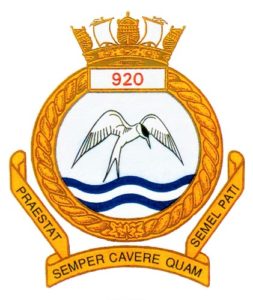 The program was created to ensure a supply of sufficient reserve pilots available for naval air operations. By May of 1953, VC920 Squadron of Toronto was formed as a tender to HMCS York. In September 1953, another Ontario squadron was formed as VC921 Kingston, again as a tender to HMCS Cataraqui. Three additional squadrons were formed as follows-VC922 / HMCS Malahat, VC923 / HMCS Montcalm and VC924 / HMCS Tecumseh. The lifespan of the Naval Reserve Air Squadrons Program was 1953-1964.
The program was created to ensure a supply of sufficient reserve pilots available for naval air operations. By May of 1953, VC920 Squadron of Toronto was formed as a tender to HMCS York. In September 1953, another Ontario squadron was formed as VC921 Kingston, again as a tender to HMCS Cataraqui. Three additional squadrons were formed as follows-VC922 / HMCS Malahat, VC923 / HMCS Montcalm and VC924 / HMCS Tecumseh. The lifespan of the Naval Reserve Air Squadrons Program was 1953-1964.
400 Squadron
In the summer of 1934, Toronto City Council adopted No. 10 Squadron and granted it permission to use the title
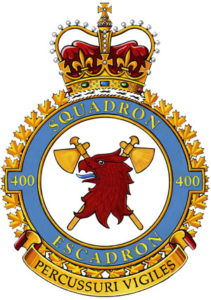 City of Toronto. In April 1935, with approval of the Chief of the General Staff, the squadron was officially designated as 10 City of Toronto Army Co-Operation Squadron. It became the first RCAF squadron honored with a city affiliation. Along with operational, training and technical duties came the inevitable ceremonial parades, such as the Toronto Garrison Church Parade, the King’s Jubilee Celebration at the Ontario Legislature and Warrior’s Day at the CNE. [ More info … ]
City of Toronto. In April 1935, with approval of the Chief of the General Staff, the squadron was officially designated as 10 City of Toronto Army Co-Operation Squadron. It became the first RCAF squadron honored with a city affiliation. Along with operational, training and technical duties came the inevitable ceremonial parades, such as the Toronto Garrison Church Parade, the King’s Jubilee Celebration at the Ontario Legislature and Warrior’s Day at the CNE. [ More info … ]
411 Squadron
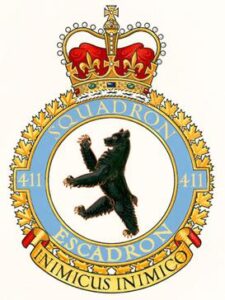
The squadron was formed on 16 June 1941 at RAF Digby in Lincolnshire, England as an Article XV squadron under the control of the British Royal Air Force. The squadron was equipped with the Supermarine Spitfire and after a period of training the squadron began operations in August 1941 with the Spitfire VB variant.[2] Part of the Hornchurch Wing it operated over continental Europe on Rhubarb sorties and as bomber escorts. After some rest periods the squadron joined the Kenley Wing for more operations over Europe.


